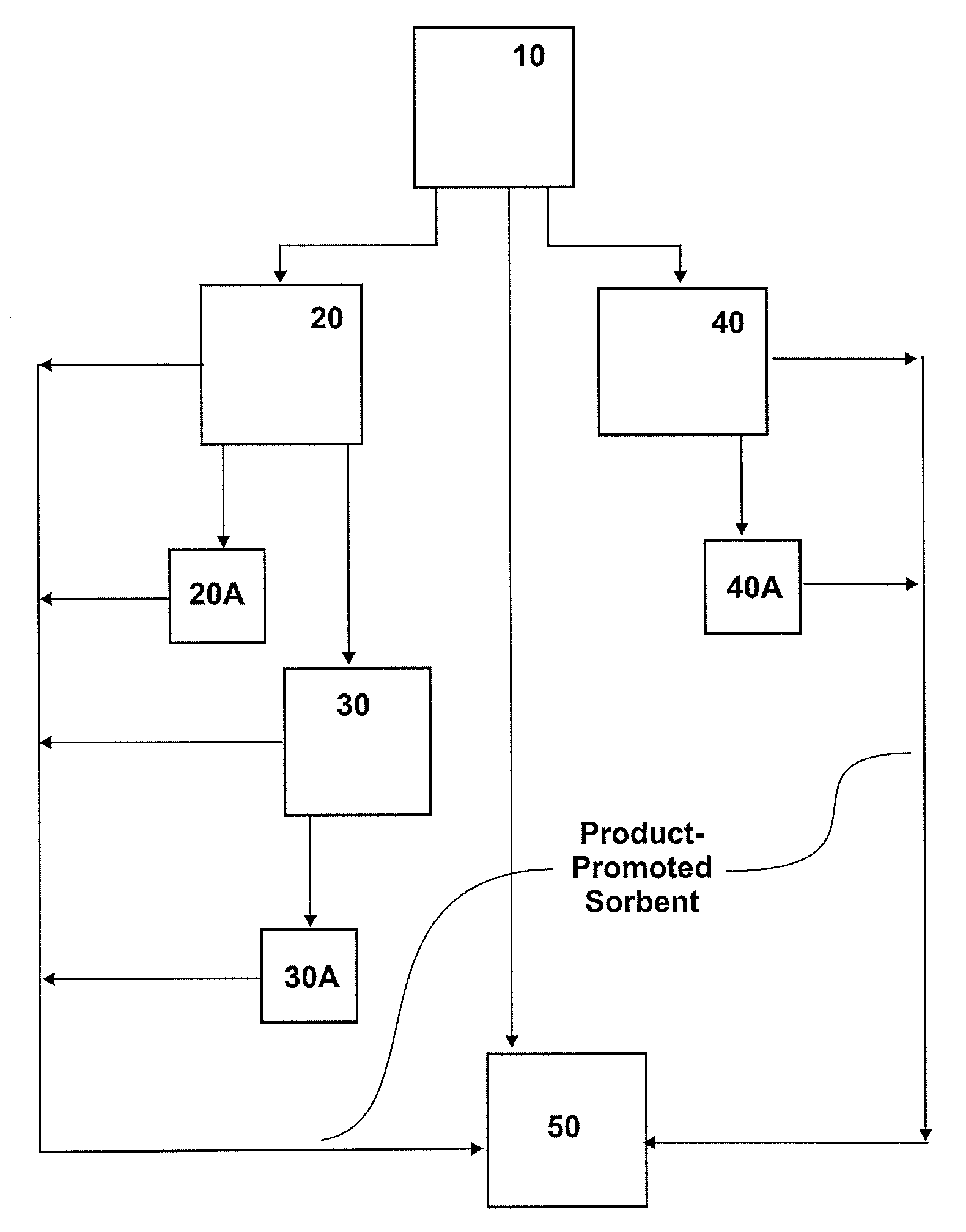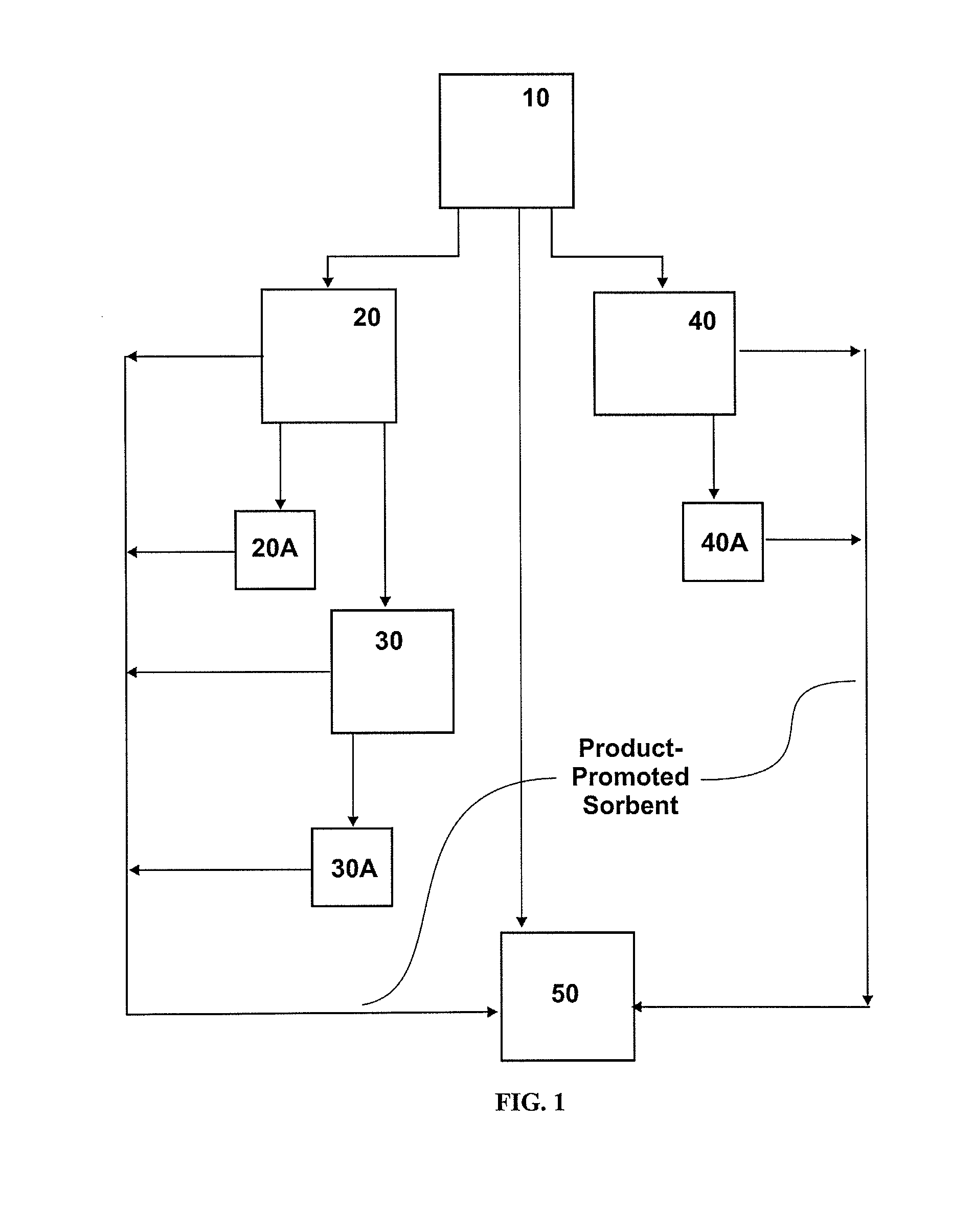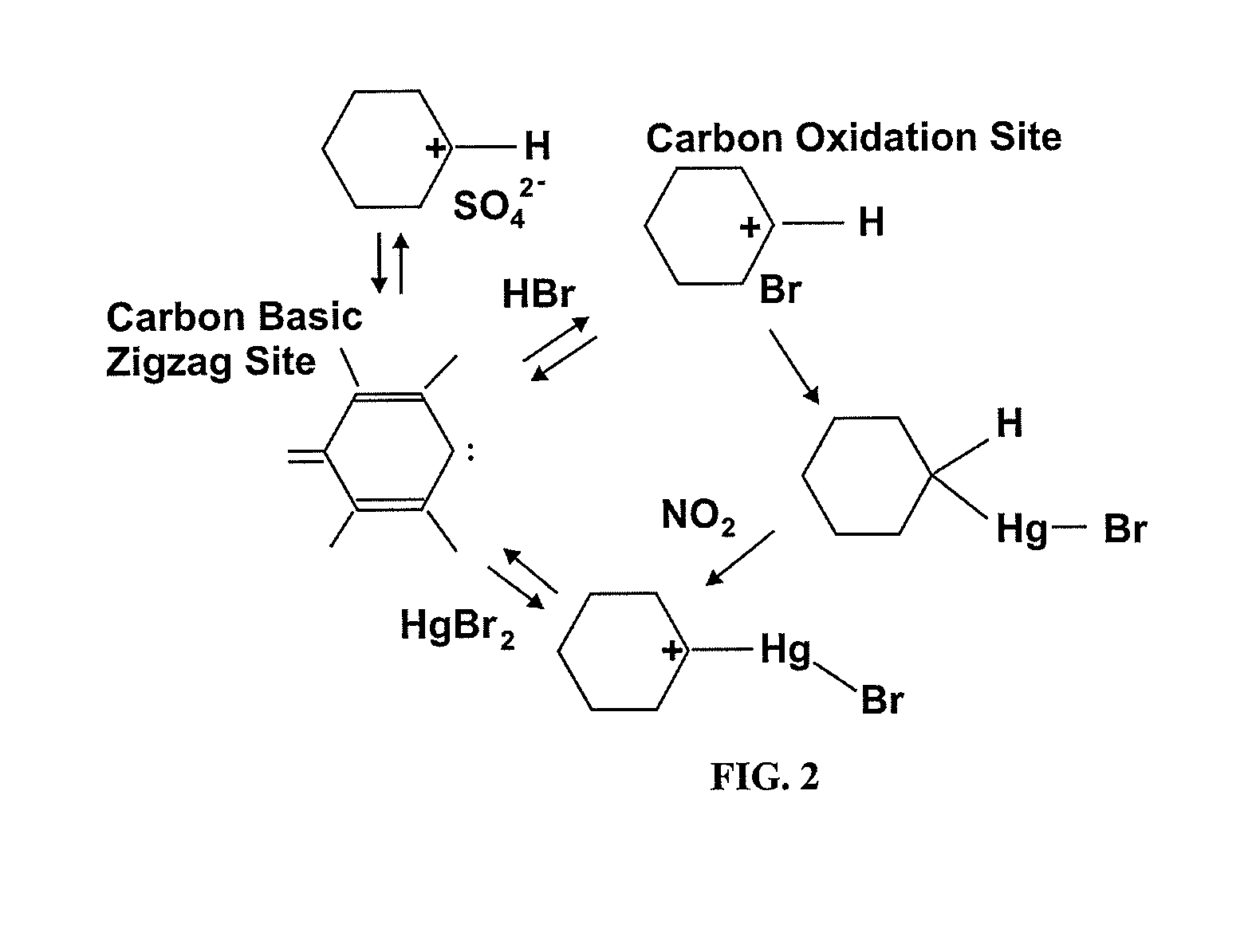Sorbents for the oxidation and removal of mercury
a sorbent and mercury technology, applied in the direction of combustion treatment, lighting and heating apparatus, separation processes, etc., can solve the problems of relatively short contact time between carbon and gas, sorbent is relatively unreactive to mercury, and the amount of spent sorbent is reduced. , the effect of enhancing the activity of mercury captur
- Summary
- Abstract
- Description
- Claims
- Application Information
AI Technical Summary
Benefits of technology
Problems solved by technology
Method used
Image
Examples
example 1
Non-Carbon-Promoted Sorbent Tests at Full-Scale Plants
[0114]Full-scale commercial tests were conducted at several coal-burning facilities equipped with ESPs wherein three types of pre-cursers were injected upstream of an ESP at 325° F. In all, more than thirty tests were performed with variations in base sorbent material, base sorbent material injection rates and promoter injection rates. Promoters were halogen-based materials. Base sorbents were clay-based materials such as perlite and pumacite, which are vesicular forms of tectosilicates comprising silicates and aluminate tetrahedra with alkali metals in the interstitual spaces. Each base sorbent was injected upstream from the ESP.
[0115]The flue gas flow rate for the test was approximately 23 million dsft3 / hr with a corresponding mercury flow rate of 0.0097 lbs Hg / hr. Initial mercury concentration in the flue gas prior to the introduction of the base sorbent or promoted sorbent was approximately 0.000417 lbs Hg / million dsft3.
[0116...
PUM
| Property | Measurement | Unit |
|---|---|---|
| mass mean particle diameter | aaaaa | aaaaa |
| size | aaaaa | aaaaa |
| particle-size distribution | aaaaa | aaaaa |
Abstract
Description
Claims
Application Information
 Login to View More
Login to View More - R&D
- Intellectual Property
- Life Sciences
- Materials
- Tech Scout
- Unparalleled Data Quality
- Higher Quality Content
- 60% Fewer Hallucinations
Browse by: Latest US Patents, China's latest patents, Technical Efficacy Thesaurus, Application Domain, Technology Topic, Popular Technical Reports.
© 2025 PatSnap. All rights reserved.Legal|Privacy policy|Modern Slavery Act Transparency Statement|Sitemap|About US| Contact US: help@patsnap.com



